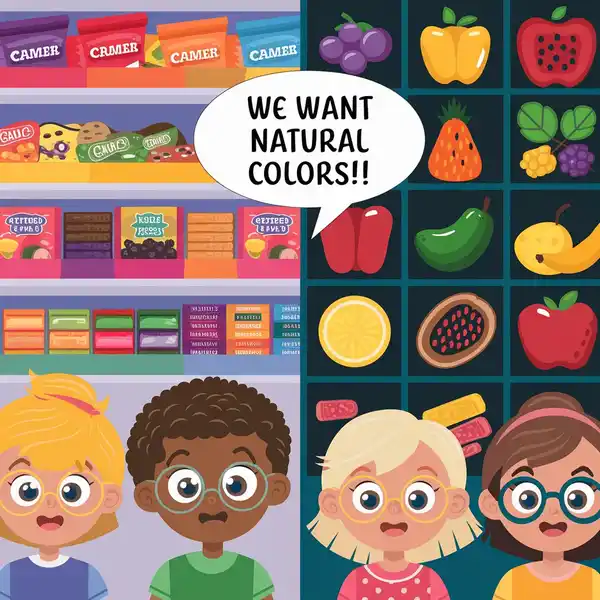The Impact of Red Dye 3 on Children’s Behavior: What Parents Should Know
In recent years, the impact of artificial food dyes, including Red Dye 3, on children’s behavior has been a hot topic of discussion among parents, healthcare professionals, and researchers. Red Dye 3, also known as Erythrosine, is commonly found in candies, baked goods, cereals, and even medications, giving them their bright red hue. While it is widely used in the United States, growing concerns about its effects on children’s health and behavior are prompting parents to seek answers.
This article delves into the potential effects of Red Dye 3 on children’s behavior, supported by research and expert opinions, and provides practical advice for concerned parents.

What is Red Dye 3?
Red Dye 3 is a synthetic dye derived from petroleum and is often used to add a vivid red color to food, beverages, and pharmaceutical products. Despite its widespread use, Red Dye 3 has been under scrutiny for decades. In the 1990s, the FDA banned its use in cosmetics due to evidence that it could cause cancer in laboratory animals. However, its use in food and other ingestible products remains approved, albeit controversial.
Behavioral Concerns Linked to Red Dye 3
1. Hyperactivity and ADHD Symptoms
One of the most debated issues regarding artificial dyes, including Red Dye 3, is their potential link to hyperactivity and attention-deficit/hyperactivity disorder (ADHD) in children. Several studies have suggested that certain artificial dyes may exacerbate symptoms of hyperactivity, particularly in children who are already predisposed to behavioral disorders.
A landmark 2007 study published in The Lancet highlighted a connection between artificial food colorings and hyperactive behavior in children. Although Red Dye 3 was not specifically singled out, it is part of a broader category of synthetic dyes that may contribute to these effects.
2. Irritability and Mood Swings
Some parents report that their children experience mood swings, irritability, or emotional outbursts after consuming products containing artificial dyes like Red Dye 3. While anecdotal, these accounts align with concerns that synthetic additives may interfere with neurotransmitters in the brain, potentially impacting mood and emotional regulation.
3. Behavioral Sensitivity in Certain Children
Not all children may be affected by Red Dye 3, but those with food sensitivities, intolerances, or underlying health conditions may be more susceptible to its effects. For these children, even small amounts of artificial dyes could trigger noticeable changes in behavior.
The Science Behind the Concerns Red Dye 3
While evidence linking Red Dye 3 to behavioral changes is still under investigation, some hypotheses suggest that artificial dyes could alter brain chemistry or affect gut health, which in turn may influence behavior. Emerging research on the gut-brain axis highlights the intricate relationship between digestive health and cognitive function, suggesting that dietary additives could play a role in behavioral changes.
Additionally, some studies indicate that artificial dyes might increase oxidative stress and inflammation, factors that could potentially affect brain function and behavior.
What Parents Should Look Out For Red Dye 3

Parents concerned about the impact of Red Dye 3 on their child’s behavior should be vigilant about its presence in everyday products. Common sources of Red Dye 3 include:
- Candies (gummies, lollipops, and jellybeans)
- Frosting and baked goods
- Cereals and breakfast bars
- Fruit-flavored snacks and beverages
- Medications (liquid syrups and chewables)
How to Identify Red Dye 3
To identify Red Dye 3, parents should check ingredient labels for terms like:
- “Erythrosine”
- “FD&C Red No. 3”
- “Red #3”
Steps to Minimize Exposure of Red Dye 3
- Choose Natural Alternatives: Opt for products that use natural colorings derived from fruits and vegetables, such as beet juice, turmeric, or spirulina.
- Go Dye-Free: Many brands now offer dye-free options for candies, snacks, and medications. Look for labels that explicitly state “no artificial colors.”
- Educate Yourself: Familiarize yourself with brands and products known to use Red Dye 3 and seek healthier alternatives.
- Test Elimination: If you suspect Red Dye 3 is affecting your child, consider eliminating it from their diet for a few weeks and monitoring changes in behavior.
What Does the FDA Say?
The FDA maintains that artificial food dyes, including Red Dye 3, are safe for consumption within regulated limits. However, consumer advocacy groups and some researchers argue that these limits may not account for the cumulative exposure children face from multiple sources. As awareness grows, pressure is mounting for stricter regulations and clearer labeling.
When to Consult a Professional
If you notice significant changes in your child’s behavior and suspect dietary factors may be contributing, consider consulting a pediatrician or registered dietitian. They can help determine whether an elimination diet or further testing is necessary.
Conclusion
While the evidence surrounding Red Dye 3 and its impact on children’s behavior is still evolving, the concerns raised by parents and researchers are worth considering. By staying informed, reading labels, and opting for natural alternatives, parents can make choices that prioritize their child’s health and well-being.
In an era of growing awareness about the effects of artificial additives, choosing products free from Red Dye 3 can help foster better behavior and health outcomes for children. Ultimately, knowledge and proactive measures are key to navigating these concerns and making informed decisions for your family.




